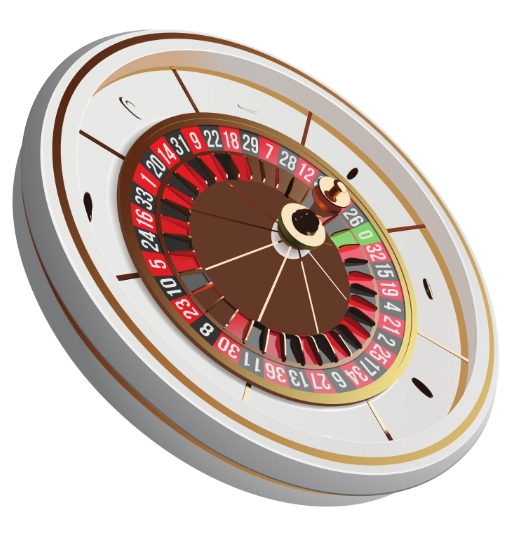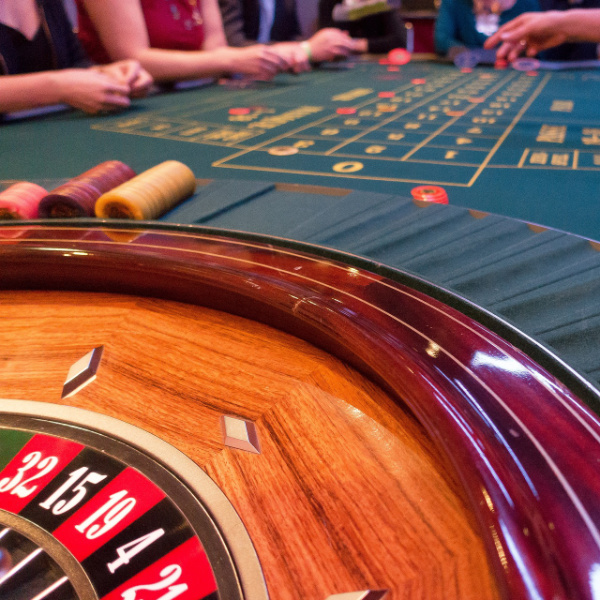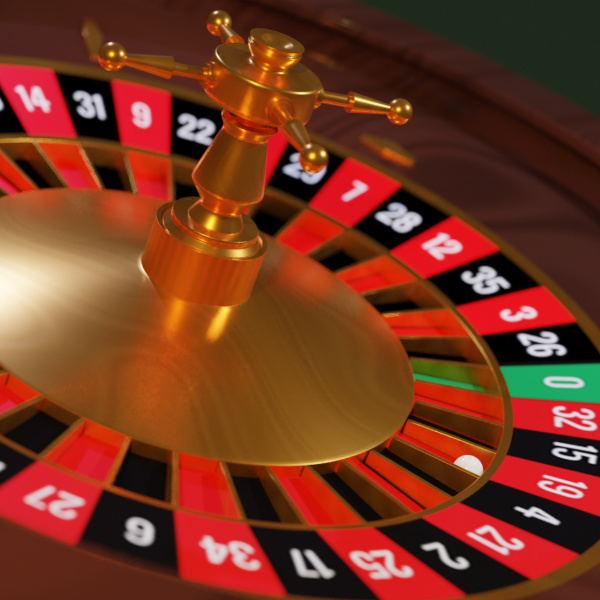Roulette many would say is the classic game of casino gambling. Of all the table games, it is the one that even beginners can get started with straight away, and holds their interest long after. It's simple, fun, engaging, and has almost no learning curve.
To get a sense of how to make basic bets - like individual numbers, even/odd numbers, or black or red - and understand how the game works in general, all you need to do is stand at the roulette table and watch for yourself for a few minutes. Even more complex bets like splits and series are easy enough to figure out with enough observation.
Keep in mind though that there are slight differences in the version you choose. For example, the classic version is usually played according to a European or French wheel structure with a single zero pocket, while American roulette differs in its double zero and the associated higher house edge.
The basic rules between all game variants, mind you, remain predominantly the same. Certainly for the simpler bets, which are rather self-explanatory. If, however, you would like to delve deeper and explore the more complex types of bets and their probabilities of winning, as well as the possible payouts, our following roulette game guide is an excellent read.
Table of Contents
- Roulette game structure and gameplay guidelines
- The most important roulette betting options
- Roulette paytable: Bet types & payout rules
- Roulette 0 or 00 - What rules lie behind the number zero on each wheel?
- Announced bets a.k.a. call bets rules
- Best odds of winning at roulette
- Rules of roulette probabilities
- Remember: Game rules will depend on variant
- Roulette Rules FAQs
Roulette game structure and gameplay guidelines
For those completely uninitiated, let's get started with a basic overview of the game.
In terms of structure, roulette tables consist of a wheel and the tableau or playing field, with the different betting options. The wheel itself is divided into numbered sections, of different colors, also known as slots or pockets into which the ball can fall. These numbers are either on a red backdrop, a black backdrop (hence betting on these colors), or in the case of the zero, green.
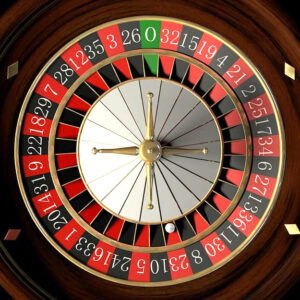

French Roulette Wheel
In French Roulette, which is considered the more classic version of the game, the wheel has a total of 37 numbers, including one green slot for the 0 which provides the house advantage.
The numbers 1-36 are arranged in a standardized fashion according to the same system wherever you play, alternating between red and black backgrounds. A European roulette wheel, we'll just point out is the same in structure, with the same number placements and colors, as well as a single 0.
If you're playing American roulette, the wheel will contain numbers 1-36, plus a green 0 and another green 00, giving this wheel an additional slot. In other words, a total of 38 pockets.
Again, while the number placements may seem random, they always follow the same sequence so all such wheels look the same - though the way that the numbers are ordered differ between a French and American roulette wheel. To help you understand the difference, you can see an example of each here, indicating the order in which the numbers will always appear.
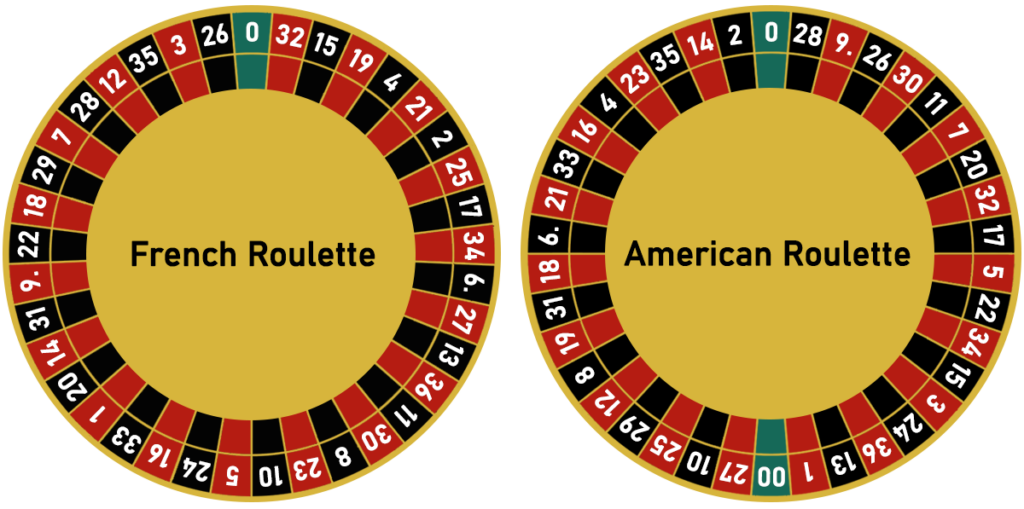

Players can usually sit at the table, but in some casinos the game is played standing up. Of course if you're playing roulette online, you can choose to sit down or stand as you please.
The action itself is conducted by the croupier; that is the person who collects the bets, spins the wheel, and pays out the cash winnings to players after each round. If you're playing online, the software acts as the invisible croupier (i.e. you won't see an actual person doing this), though if you opt for live blackjack games you can experience this added element of action.
At the beginning of each new round (especially in a French casino), the croupier asks the players to place their bets, calling out: "Faites vos jeux" or "make your play". The croupier then spins the wheel and throws the ball into the cauldron.
Bets are placed on the tableau in the form of chips. The tableau shows the individual numbers from the wheel, as well as other betting options including odd, even, red, black, or number ranges like 1 to 18, or 19 to 36.
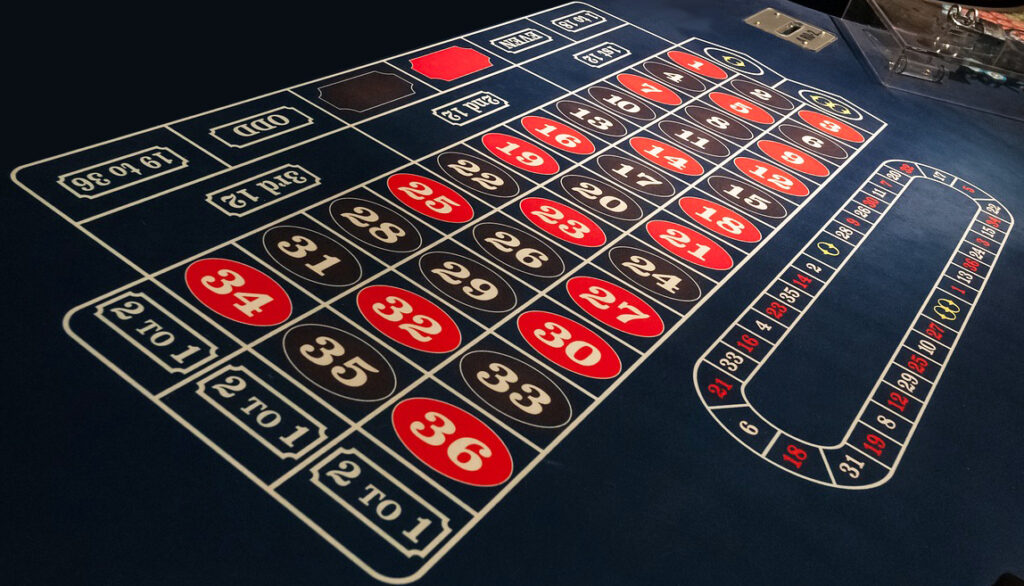

After a few revolutions, while the ball is still running in the bowl, the croupier will then close the bets, this time shouting out: "Rien ne va plus," or literally translated "nothing goes any more," if it's a French game, or in English simply "no more bets." Either way, from this moment on, no further bets may be placed.
As soon as the wheel stops, and the ball settles into a slot, the game result is determined. At this point the croupier announces both the number and the color and takes over the settlement of the bets, sometimes using a small rake to physically push the chips won across the table to the lucky winners, or sweeping in the chips from those who have lost.
The most important roulette betting options
Now that we've covered the basics of gameplay, let's take a closer look at the rules for the various betting options you'll find on the racetrack and tableau. You can tell the difference, between the two, by the way, by their very shape. The race track is ovular (as a racetrack generally is) and the tableau rectangular (like a chart would be).


For starters, for all roulette variants an important "rule" to keep in mind is that the more numbers or game results a bet covers, the greater your chance of winning. At the same time, however, the payout rate also decreases. That's basically the nature of odds after all.
Higher odds of winning mean smaller ratios paid out; lower odds give you higher prizes. As such, it is all the more important to familiarize yourself with the betting options, so that you're able to weigh the risk of any bet versus the chance of winning, and decide accordingly - if that's part of how you're making your decision.
Delving into the particulars, in general, the different types of bets are divided into either inside bets or outside bets, depending on which part of the table they are placed on. For illustrative purposes, have a look at the image below. As you can see using the sliders, in image #1 is the area for inside bets, marked by the green frame. And in image #2 is the area for what are called outside bets, again here highlighted by the green square frame.
Roulette paytable: Bet types & payout rules
For a full view of the types of bets you can make, what they're colloquially called, and the ratio at which they pay, have a glance at this table.
| INSIDE BETS | Also known as | Explanation | Payout |
| Plein | Full number or straight up bet | Bet on individual numbers | 35:1 |
| Cheval | Split bet | Bet on two numbers | 17:1 |
| Transversal | Street, side, or trio bet | Bet on three numbers | 11:1 |
| Carré | Corner or square bet | Bet on four numbers | 8:1 |
| Les quatre premiers | The first four | Bet on numbers 0-3 | 8:1 |
| Transversal simple | Half dozen, six line, line bet, or double street | Bet on six numbers | 5:1 |
| Also known as | Explanation | Payout | |
| Douzaine | Dozens bet | Bet on 12 numbers on the layout | 2:1 |
| Colonne | Column bet | Bet on 12 numbers in a column | 2:1 |
| Even money | Evens, odds, red, black, high, or low bet | Bet on 18 numbers of one type | 1:1 |
As you can see, betting on plein, that is on an individual number, with a 35:1 payout, is obviously the most worthwhile if you win. However, this straight up style of bet is also where the greatest risk of loss lies, since you have to get your guess exactly right, which isn't easy, no matter how lucky you're feeling.
On the flip side, one of the even money bets, like odd or even, is such a sure thing that it pays out accordingly; hence maybe less worthwhile if you're looking to build your bankroll. Ultimately, finding that balance between risk and payout is of course up to you.
To help you better understand how each of these bet types looks, the following graphic shows how the chips on the table would be placed:
1 = Plein (number 26)
2 = Cheval (split bet on 10 and 11)
3 = Transversal plein (4, 5, and 6)
4 = Carré (2, 3, 5, and 6)
5 = First four (0, 1, 2, and 3)
6 = Transversal simple (19, 20, 21, 22, 23, and 24)
7 = Column (3, 6, 9, 12, 15, 18, 21, 24, 27, 30, 33, and 36)
8 = Dozens (numbers 13 to 24)
9 = Even money (high numbers 19-36)
10 = Even money (black)
11 = Even money (odd numbers)
Roulette 0 or 00 - What rules lie behind the number zero on each wheel?
On a roulette wheel, zero is the only number that has a green background. This basically applies to all versions of roulette. European and French roulette have one zero, while American roulette has a second, so that it's a double zero game.
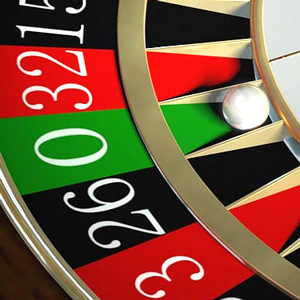

The Roulette Zero
The zero and the double zero account for the difference between the house edge in these variants of the game. That is, in the American 00 game the house edge is generally quoted at around 5.26%, while in European and French single 0 roulette games it's more like a 2.7% house edge. In other words, almost half, which is obviously quite significant.
This calculation can be understood when you think of bets like red or evens. If the ball lands on 0 or 00 on such bets, the house wins. Also the casino would win against players who in the same round bet on black or odds.
In European roulette mind you, if the ball lands in 0, the casino takes all the money, whereas in French roulette, only half, if the la partage rule is in place. Similarly, with the en prison rule, half is taken by the casino, with the other half remaining in place on the table for another round, potentially lowering your losses.
While all that is important, the zero in roulette, needless to say, is not just decorative nor a component in calculating house edge. Rather it is also a number that you can bet on alone or as part of a combination wager. With such bets, players win even if the ball lands on zero.
Announced bets a.k.a. call bets rules
With call bets, each player announces which number combinations they would like to bet on. In other words, the croupier receives verbal instructions on where to place the player's chips according to predefined names. Just note, these apply to French roulette and European roulette, as opposed to American roulette, where the number order on the wheel differs making them obsolete.
The call bet approach is chosen when an area of the tableau is not easily accessible to the player. Another reason is that in roulette there are certain betting options that are not so easy to place, due to their rather complicated and exacting nature, so the croupier does this to avoid confusion. Just keep in mind, not every variant of roulette accommodates call bets, or not necessarily every type.
In any event, to help you better understand, we've outlined the most popular call bets, which are as follows:
Voisins du zéro (neighbors of zero)
Probably the most famous of the call bet options, the grands voisins du zero as it's more accurately called, refers to the 17 numbers found on the wheel between 22 and 25 inclusive; i.e. those surrounding the number 0.
It constitutes a wager in which a total of nine chips are placed at the intersection of various numbers (i.e. split bets), with two chips on the numbers 0, 2, and 3, another 2 chips on the 25, 26, 28, and 29 square corner, and one chip on the 4/7 split, 12/15 split, 18/21 split, 19/22 split, and 32/35 split.
Le tiers du cylindre (third of the wheel or small series)
Named for the 12 numbers on one third of the wheel between 27 and 33 inclusive, this bet consists of six chips placed on the splits between each of these numbers. That means one chip is placed on each the 5/8, 10/11, 13/16, 23/24, 27/30, and 33/36 divide.
You may also, by the way, hear the tiers bet referred to as the small series bet in some casinos.
Orphelins (orphans)
This call bet requires you to place at least five chips (we say at least because you can also bet in multiples).
You will do so on numbers that constitute the two sections of the wheel that are outside the tiers and voisins bets, or more specifically 17-34-6 and 1-20-14-31-9. One chip is placed directly on the 1, and the rest are splits on 6/9, 14/17, 17/20, and 31/34 respectively.
Jeu zéro (zero game)
In the simple zero game, you bet on the numbers closest to (and including) 0, but placed in a very specific way. That is a 0/3 split, 12/15 split, 32/35 split, and straight up on 26. In total, if you're counting, that's 4 chips placed per round.
If you want, you can also wager on voisins du zero in this instance, to further hedge your bets.
Finale en plein (final bets)
Finals en plein can be better understood by another of its names, finales with single numbers. In this bet, basically, what you're doing is wagering on all individual numbers with the same last digit, simultaneously.
So if a final 4 is played, that would be chips on the numbers 4, 14, 24, and 34, so that four chips are required. If a final 0 is played, that would be chips directly on the numbers 0, 10, 20, and 30. The odds, in turn would be the same as for carré, as the chips cover four numbers.
If you want to bet fewer chips, or have an affinity for the numbers 7, 8 or 9, you can also go with those final digits. That way your bet for a final 7 would be 7, 17, and 27, for example, with slightly lower odds for a three number wager accordingly.
Finale à cheval
Also known as finales with splits, in this type of bet, you're once again setting up your chips on final numbers. This time, however, you make either a series of split number bets, or a combo of split bets plus a straight up bet (i.e. on one number) that this time includes TWO final numbers.
For example, if you choose 0 and 1, you would place chips on 0/1, 10/11, 20/21, and 30 and 31 individually because the numbers 30 and 31 are not next to each other on the table to accommodate a split. In total, five chips are required for this bet.
For a finals à cheval choice of 8 and 9 you'd have an 8/9 split and 28/29 split, while 18 and 19 would each be played straight up, so that's four chips in total.
Neighbors (voisins)
Neighbor bets are single bets on numbers surrounding a specific number on the roulette wheel. Pick a number on a wheel, for example 17. Then if you bet 4 neighbors, you would bet the four numbers both left (34 - 6 - 27 – 13) and right (25 - 2 - 21 – 4) of 17 on the wheel, which adds up to 9 numbers in total. Each number will be a straight bet, so you need a total of 9 chips.
In theory, you can bet on as many neighbors as you'd like, although some casinos or games may set their own limits.
Note: The call bets mentioned do not necessarily have to be placed via an announcement; there is also the so-called racetrack, as you can see detailed in the image below. This complements the tableau and helps with the announcement games described above by visually reflecting the number arrangement on the wheel, as well as how the combination bets described above would look laid out.
Best odds of winning at roulette
How good are the chances of making a profit when spinning the "little wheel"? This of course depends on the type of bet you're placing. Betting simple (like red/black or even/odd numbers) theoretically offers a 50:50 chance of winning.
However, realistically the probability is reduced by the fact that there is at least one green zero on every roulette table, and in the case of the American version, two green zeros, so it's slightly lower than that. But still this type of bet has the best odds offered.
Rules of roulette probabilities
While in the above chart we spelled out the payouts for each type of wager, the following table shows the probability of winning according to percentages offered by individual bets, differentiated between European/French roulette and American roulette games.
| Bet type | French/European roulette | American roulette |
|---|---|---|
| Plein or straight bet (single numbers) | 2.70% | 2.63% |
| Cheval (two numbers) | 5.41% | 5.26% |
| Three numbers | 8.10% | 7.89% |
| Four numbers (e.g. carré) | 10.81% | 10.52% |
| Five numbers (0, 00, 1, 2, 3) | not available | 13.51% |
| Six numbers | 16.22% | 15.79% |
| Dozens / columns / 12 numbers | 32.43% | 31.58% |
| High/low, even/odd, red/black (18 numbers) | 48.65% | 47.37% |
As is clear at first glance, French roulette is more worthwhile over the long haul, at least in terms of the probability of winning. On the other hand, American roulette is the variant with the greater excitement factor and is generally considered a higher speed game.
In general, the former simpler version is recommended for beginners, as there is enough time for decisions and, thanks to only one zero, a smaller house edge. Incidentally, European roulette often combines the advantages of both variants. That is, it's played quite quickly and only has one zero so you get the same higher odds, plus slightly higher thrills.
Remember: Game rules will depend on variant
Most variants of roulette are based on the same fundamental rules. However, as the difference between the single zero in French and European roulette and the additional double zero in American Roulette make clear, there can be deviations in terms of results, odds, payouts, and even potential bets, accordingly.
Nowadays, with so many online roulette games available, there are increasingly variations as well, to help set the various titles apart. For example, depending on the game, a race track may or may not be available in an online game. There are also many additional betting options and side bets online that are not covered by the classic tableau.
Roulette Rules FAQs
- Is it possible to bet on 0 or 00 in roulette games?
- What is meant by the house edge in roulette?
- Where can I learn roulette rules?
- Which roulette bets are recommended?
1. Is it possible to bet on 0 or 00 in roulette games?
Yes, of course, zero - and double zero in the case of American roulette - can be bet on like any other number. And likewise, the probability of winning does not differ from that of any other individual numbers. So if a chip is placed on 0, the probability of this result occurring is 1:37 in French or European roulette, and 1:38 in American roulette.
Also, we'll remind you, there are also two popular betting options that include placing chips on 0; voisins du zéro and jeu zéro, as you can see detailed above in the call bets section.
2. What is meant by the house edge in roulette?
Put bluntly, the house edge is how much the casino can expect to earn on any kind of game, expressed in a percentage.
For roulette, it depends on which variant of the game is being played. The house edge on French and European roulette, for example, is generally cited as 2.7%. However, in American roulette, as a result of the double zero, this jumps to around 5.26%. So it's pretty clear, just from that, which is "easier" to win, and where the casino has more to gain.
On the other hand, overall, there is a fairly high payout rate, which can be expected from all types of roulette. And you can adjust your winning probability by making different types of bets. Also, in French roulette there is the so-called la partage or en prison rule that lowers your losses even on a losing spin.
The betting options and very specific rules, mind you, do not apply in all casinos, but when they do, they ensure that the house edge on even money bets is reduced to as little as 1.35%, which is the lowest house edge you'll find.
3. Where can I learn roulette rules?
Overall, the rules of the game are not particularly complex. So one possibility is the proverbial jump into cold water way; that is, simply seat yourself at a table at your local casino, observe a few rounds, then start betting (small) yourself to get started.
If you would like to proceed more strategically, however, we suggest you familiarize yourself with the rules of roulette that we've outlined in this article. Then try out the individual betting options on a free version of roulette until you gain more confidence to move into real money mode.
4. Which roulette bets are recommended?
It's very hard to make recommendations in terms of bet types, as people choose different options for their own reasons.
For example, the finals en plein system doesn't really have any science behind it. Rather it has a lot to do with individuals and their own lucky numbers. For example, if you love the number 7, you'd be all over that in your bets.
Other people like to bet the even odds way - even/odd, black/red - because this has particularly high payout rates, with your winning chances just under 50%. However, keep in mind, the prize cash you'll win will do nothing but keep your bankroll even.
As such, you have to balance your appetite for risk, budget, and desired prize amount to come up with what seems like a better type of bet for you. Again, we recommend free online roulette as a great way to help you figure out your preferences, then go from there.
Conclusion
At the end of the day, roulette is a game of chance. Sure there are roulette strategies you can employ to hopefully boost your winnings, and roulette systems that some will claim help them come out ahead. But at the end of the day, there is nothing you can do to influence where the wheel and ball will land.
As such, the best you can do is familiarize yourself with the basic roulette workings, how the game is played, your different betting options, and the basic odds. Other than that, keep track of your bankroll and hope for the best. But most importantly, always remember to keep things fun, because that, in our opinion is what roulette, and real money gambling are all about.
